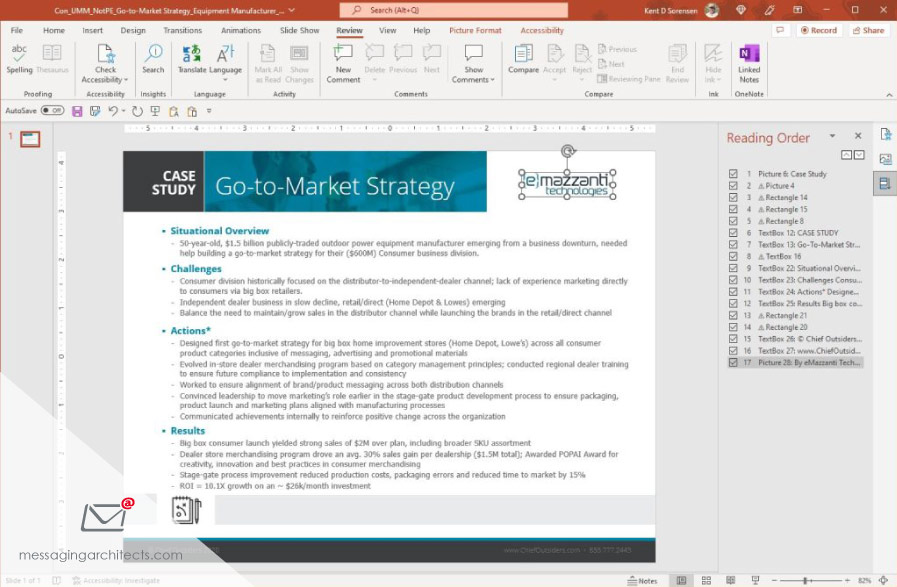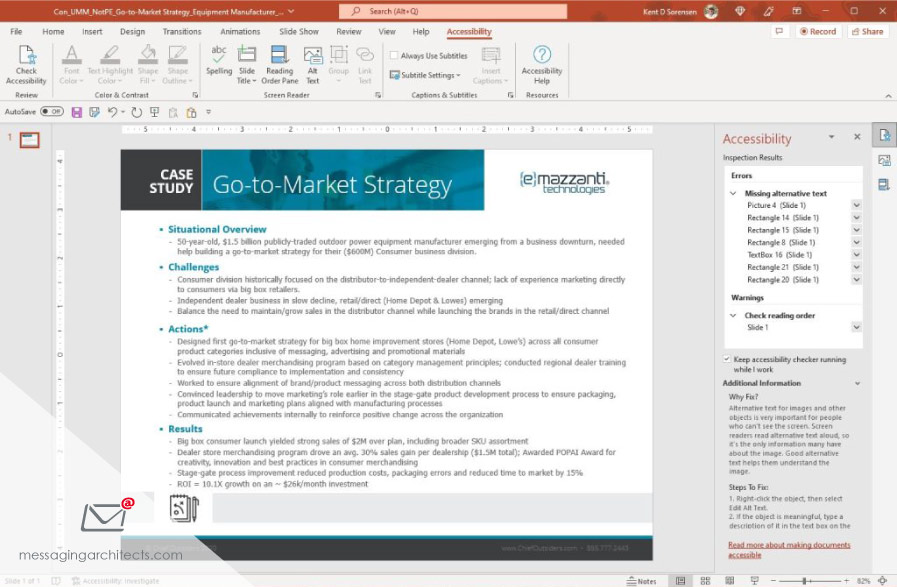Including a PowerPoint presentation when delivering content engages the audience on multiple levels, increasing understanding and participation. However, audience members with visual or hearing impairments or people who speak other languages may miss critical elements. PowerPoint accessibility features help to ensure everyone can access the content.
For instance, consider the scenario in which a team member shares a presentation that uses complex infographics to depict critical information. A visually impaired colleague using a screen reader may miss key points of the presentation.
Keep in mind these accessibility best practices when preparing presentations, whether presenting live or sharing presentations for on demand viewing.
Use Alt Text for PowerPoint Images
Alt text (alternative text) refers to text that is attached to an image and describes the image. Screen readers will read the alt text for visually impaired audience members. For instance, a photo of the World Trade Center might include this alt text: “World Trade Center at sunrise on September 11, 2001.” In this case, the alt text provides both a brief description and context.
PowerPoint automatically generates alt text when you insert an image, displaying the text at the bottom of the image. However, the auto-generated text rarely provides sufficient context or detail. To edit the alt text, click the Edit button next to the text. Enter one or two detailed sentences that describe the image, demonstrating its relevance to the material.
To add or edit alt text for an existing image, right click the image. Then select Edit Alt Text. You can also mark an image as decorative if describing it adds no value.
Add Longer Descriptions for Complex Graphics
Complex graphics, such as infographics, that convey critical information may require more detail. In that case, enter a short description in the alt text. Then, write a longer description in a content placeholder such as a text box. If you move the content placeholder off-screen, it will not appear on the slide, but the screen reader will still access it.

Check Reading Order for Screen Reader Support
Presenters need to understand that, by default, screen readers read slide elements in the order they were added. That can differ significantly from the order the elements appear on the slide. Fortunately, PowerPoint allows users to define the reading order for a slide.
To review and edit reading order for a slide:
- With the slide displayed, click Review > Check Accessibility > Reading Order Pane.
- The Reading Order pane displays to the right of the slide. Each element of the slide displays in the order it will be read. This includes off-screen elements such as text boxes that appear outside of the display area.
- To change the reading order, click an element and drag it to the desired location in the list.
- To tell the screen reader to ignore an element, click the check box next to the element. PowerPoint marks it as decorative.
Add Subtitles and Captions for Translation and Hearing Support
For live presentations, PowerPoint can transcribe the presenter’s words and display captions on-screen in real time. For example, subtitles make presentations accessible to hard of hearing audience members or those who need to view the presentation with the sound off. Additionally, PowerPoint can translate the presenter’s words and display subtitles in a different language.
Subtitles require a good internet connection and a microphone for the presenter. To set up subtitles, click Slide Show > Subtitle Settings. You can specify the speaker language and the subtitle language. You can also choose a microphone and select where the subtitle will appear on the slide.
Additionally, PowerPoint allows you to add closed captions to video elements. To do so, first create or locate a WebVTT caption file for the video. Then click the video and select Playback > Insert Captions to attach the WebVTT file to the presentation.

Microsoft Office Accessibility Checker Ensures Inclusion of PowerPoint Accessibility Features
Finally, be sure to run the Accessibility Checker as you review your presentation. The Accessibility Checker will check to make sure all non-text elements include alt text. It will also check that all slides have unique titles, verify that video elements include captions and provide additional suggestions.
To run the Accessibility Checker, click Review > Check Accessibility > Check Accessibility.
Harness the Power of Microsoft 365
PowerPoint accessibility features represent just one way that Microsoft works to improve productivity and collaboration. To take advantage of the power of Microsoft products, talk with Messaging Architects consultants about migrating to Microsoft 365.







